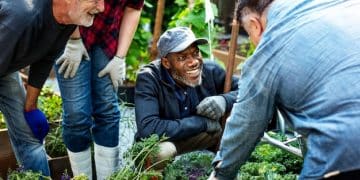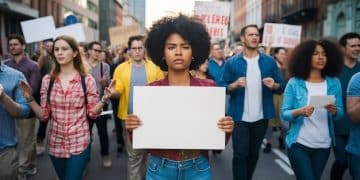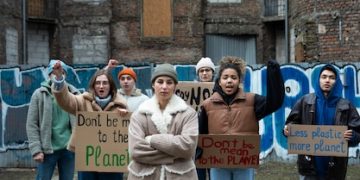Examining the Impact of Climate Change on Social Justice
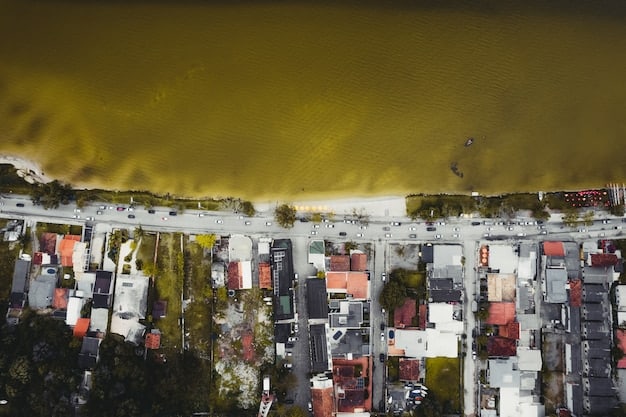
Examining the Impact of Climate Change on Social Justice: How are Vulnerable Communities Disproportionately Affected? reveals that climate change exacerbates existing inequalities, disproportionately impacting marginalized communities with limited resources and heightened exposure to environmental risks.
Climate change isn’t just an environmental issue; it’s a profound matter of social justice. When we talk about rising sea levels, extreme weather events, and resource scarcity, we’re also talking about how these challenges deepen existing inequalities, particularly for communities already facing systemic disadvantages.
Examining the Impact of Climate Change on Social Justice: How are Vulnerable Communities Disproportionately Affected? requires a closer look at the intersection of environmental hazards and social vulnerabilities. Let’s explore how climate change acts as a threat multiplier, exacerbating the challenges faced by marginalized populations.
Understanding the Intersection of Climate Change and Inequality
The intersection of climate change and inequality highlights a critical aspect of environmental justice. It demonstrates how climate change does not affect all populations equally, with vulnerable communities bearing the brunt of its impacts.
Climate Change as a Threat Multiplier
Climate change acts as a threat multiplier, exacerbating existing social, economic, and political vulnerabilities. This means that communities already struggling with poverty, discrimination, and lack of access to resources are disproportionately affected by climate-related disasters and environmental changes.
Environmental Racism and Climate Justice
Environmental racism, the disproportionate exposure of marginalized communities to environmental hazards, is a key factor in understanding climate injustice. These communities often live in areas with higher levels of pollution, lack access to clean water and sanitation, and are more vulnerable to the impacts of climate change.
- Marginalized communities are more likely to live in areas prone to flooding, wildfires, and other climate-related disasters.
- These communities often lack the resources and infrastructure to adapt to climate change impacts.
- The impacts of climate change can exacerbate existing health disparities, leading to higher rates of respiratory illness, heatstroke, and other climate-related health problems.
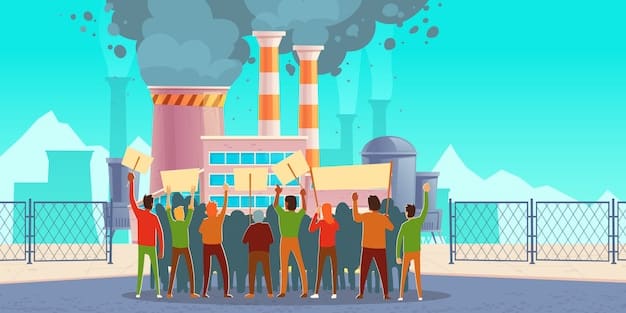
In conclusion, understanding the intersection of climate change and inequality is crucial for developing effective and equitable climate solutions. Addressing environmental racism and ensuring that vulnerable communities have the resources and support they need to adapt to climate change impacts is essential for promoting social justice.
How Climate Change Disproportionately Impacts Vulnerable Communities
Examining the Impact of Climate Change on Social Justice: How are Vulnerable Communities Disproportionately Affected? requires acknowledging the unique challenges faced by marginalized populations. Climate change exacerbates existing inequalities, leading to greater hardship and vulnerability for those already struggling.
Economic Impacts
Climate change can have devastating economic impacts on vulnerable communities, particularly those dependent on agriculture, fishing, and other natural resource-based livelihoods. Extreme weather events, such as droughts, floods, and hurricanes, can destroy crops, livestock, and infrastructure, leading to loss of income and food insecurity.
Health Impacts
Climate change can also have significant health impacts on vulnerable communities. Heat waves, air pollution, and waterborne diseases can disproportionately affect low-income populations, children, the elderly, and people with pre-existing health conditions.
- Increased exposure to extreme heat can lead to heatstroke, dehydration, and other heat-related illnesses.
- Air pollution from wildfires and industrial emissions can worsen respiratory problems, such as asthma and bronchitis.
- Waterborne diseases, such as cholera and typhoid, can spread more easily in areas with poor sanitation and contaminated water supplies.
Climate change is deeply entwined with issues of justice. Understanding these links helps to create responses that protect everyone. This approach aims to build fairer, more resilient societies.
Specific Examples of Climate Injustice in the US
Climate injustice is not an abstract concept; it is a lived reality for many communities across the United States. Several specific examples illustrate how vulnerable populations are disproportionately affected by climate change impacts.
Hurricane Katrina and the Lower Ninth Ward
The devastation of Hurricane Katrina in 2005 exposed the deep-seated inequalities in New Orleans, particularly in the Lower Ninth Ward, a predominantly Black neighborhood. The levee failures caused widespread flooding, displacing residents and destroying homes and businesses. The recovery process was slow and unequal, with many residents struggling to rebuild their lives.
Flint Water Crisis
The Flint water crisis, which began in 2014, is another example of environmental injustice. The city’s decision to switch its water source to the Flint River led to lead contamination, exposing residents, particularly children, to harmful levels of the toxin. The crisis disproportionately affected low-income, Black residents, highlighting the systemic racism in access to clean water.
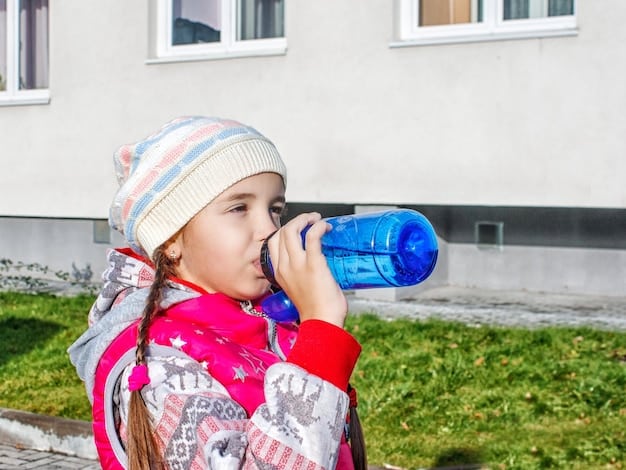
Understanding these specific examples of climate injustice is crucial for learning from past mistakes and developing more equitable and just climate policies. By addressing the root causes of vulnerability and investing in community-led solutions, we can create a more resilient and equitable future for all.
Strategies for Addressing Climate Change and Promoting Social Justice
Addressing climate change and promoting social justice requires a multi-faceted approach that prioritizes the needs of vulnerable communities and addresses the root causes of inequality. Several strategies can be implemented to achieve these goals.
Investing in Community Resilience
Investing in community resilience is essential for helping vulnerable populations adapt to climate change impacts. This includes providing resources for infrastructure improvements, disaster preparedness, and community-led adaptation initiatives.
Promoting Renewable Energy and Energy Efficiency
Promoting renewable energy and energy efficiency can reduce greenhouse gas emissions and create economic opportunities in vulnerable communities. Investing in solar, wind, and other renewable energy projects can create jobs, lower energy costs, and improve air quality.
- Governments can provide incentives for renewable energy development, such as tax credits, grants, and loan guarantees.
- Community-based organizations can partner with local businesses and residents to implement energy efficiency programs.
- Investing in public transportation and promoting walkable, bikeable communities can reduce reliance on fossil fuels and improve air quality.
In conclusion, addressing climate change and promoting social justice requires a comprehensive approach that prioritizes the needs of vulnerable communities and addresses the root causes of inequality. By investing in community resilience, promoting renewable energy, and advocating for just policies, we can create a more sustainable and equitable future for all.
The Role of Policy and Advocacy in Advancing Climate Justice
Policy and advocacy play a critical role in advancing climate justice and ensuring that climate policies benefit all members of society, particularly vulnerable communities. By advocating for just policies and holding decision-makers accountable, we can create a more equitable and sustainable future.
Advocating for Equitable Climate Policies
Advocating for equitable climate policies is essential for ensuring that climate actions do not disproportionately burden vulnerable communities. This includes advocating for policies that prioritize investments in low-income communities, promote renewable energy access, and protect communities from environmental hazards.
Holding Decision-Makers Accountable
Holding decision-makers accountable is crucial for ensuring that climate policies are implemented effectively and equitably. This includes monitoring policy implementation, tracking progress toward climate goals, and advocating for stronger enforcement mechanisms.
Effective climate change approaches must include everyone in the conversation. They should support the voices and needs of those most impacted, ensuring plans are fair and effective for all.
Examining the Impact of Climate Change on Social Justice: How are Vulnerable Communities Disproportionately Affected? Policy Recommendations
Examining the Impact of Climate Change on Social Justice: How are Vulnerable Communities Disproportionately Affected? necessitates evidence-based policy recommendations that address both the environmental and social dimensions of the crisis. These recommendations aim to mitigate the disproportionate burden on vulnerable communities and promote a more equitable and sustainable future.
Prioritize Investments in Climate Resilience for Vulnerable Communities
Allocate specific funding for climate resilience projects in low-income and marginalized communities. This includes infrastructure improvements, disaster preparedness programs, and community-led adaptation initiatives.
Implement Environmental Justice Screening Tools
Utilize environmental justice screening tools to assess the potential impacts of climate policies on vulnerable communities. These tools can help identify areas where policies may have unintended consequences and ensure that mitigation measures are in place.
- Environmental Protection Agency (EPA) offers the EJSCREEN tool for identifying areas with high environmental burdens and vulnerable populations.
- State and local governments can adopt similar tools to inform decision-making.
- Incorporate community input into the development and implementation of these tools.
By implementing these policy recommendations, governments can take meaningful steps toward addressing climate change while promoting social justice and equity. Ensuring that vulnerable communities are protected and empowered is essential for creating a sustainable and just future for all.
| Key Point | Brief Description |
|---|---|
| 🌍 Climate Injustice | Vulnerable communities are disproportionately affected by climate change impacts. |
| ⚖️ Economic Impacts | Climate change affects agriculture, fishing, and natural resource-based livelihoods. |
| ⚕️ Health Disparities | Heat waves, air pollution, and waterborne diseases disproportionately affect vulnerable populations. |
| 🌱 Community Resilience | Investing in infrastructure, disaster preparedness, and community-led adaptation initiatives. |
Frequently Asked Questions
It is essential because it highlights how climate change worsens existing inequalities, impacting those least able to cope, and necessitating fair solutions.
Examples include Hurricane Katrina’s impact on the Lower Ninth Ward and the Flint water crisis, both disproportionately affecting marginalized communities.
By implementing equitable climate policies that prioritize investments in vulnerable communities and promote renewable energy access.
It refers to the disproportionate exposure of marginalized communities to environmental hazards, exacerbating health and economic disparities.
Investing in community resilience helps vulnerable populations adapt to climate change impacts through infrastructure improvements and community-led initiatives.
Conclusion
Examining the Impact of Climate Change on Social Justice: How are Vulnerable Communities Disproportionately Affected? reveals a complex web of interconnected issues. Addressing this requires multifaceted strategies, with practical policy recommendations, to foster both environmental sustainability and social equity.
By prioritizing the needs of vulnerable communities and advocating for just solutions, we can strive towards a more resilient and equitable future for all, making sure no one is left behind in this climate adaptation journey.

